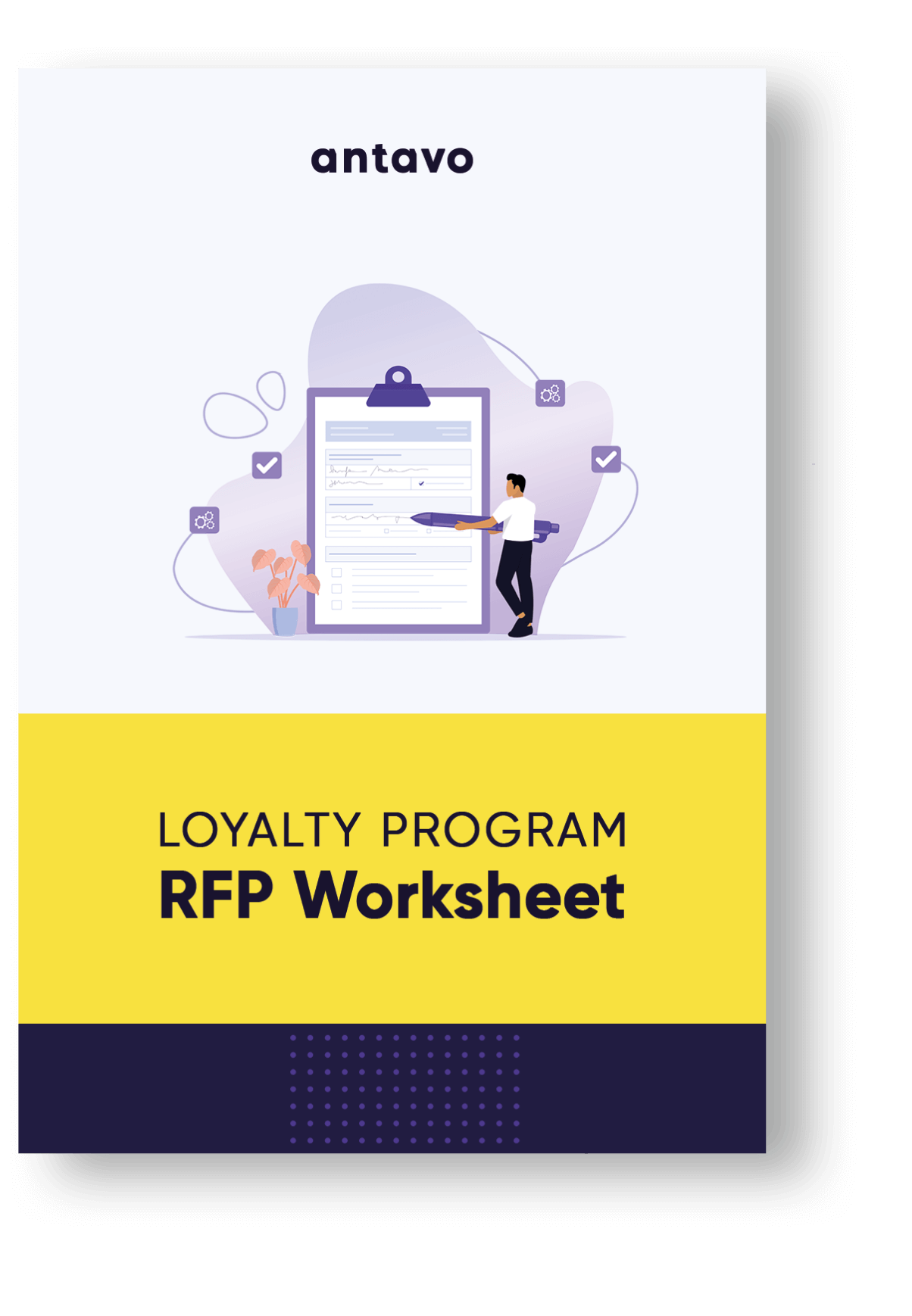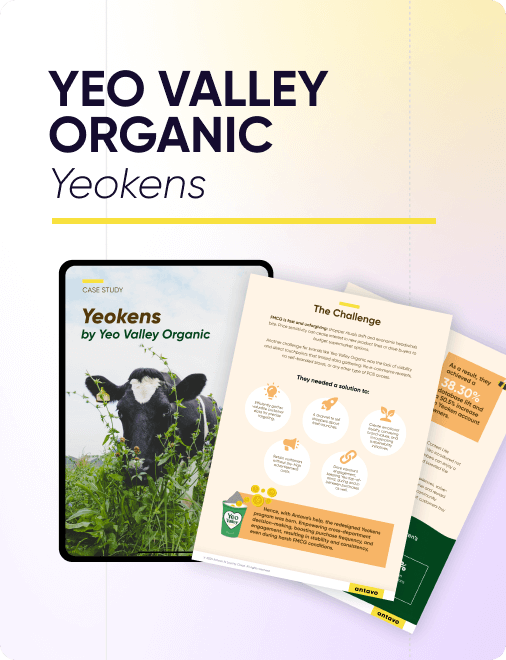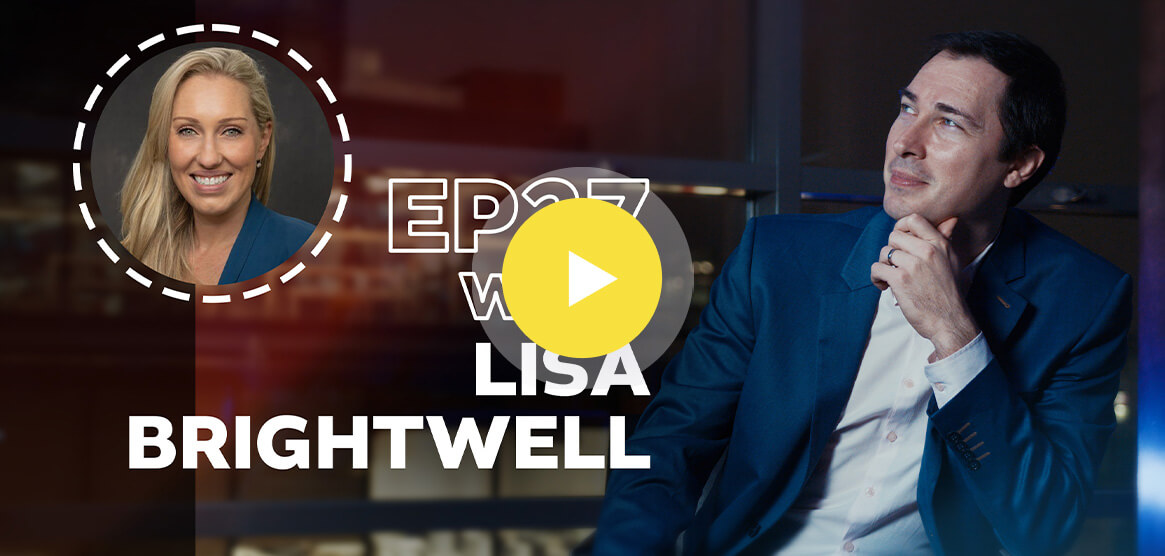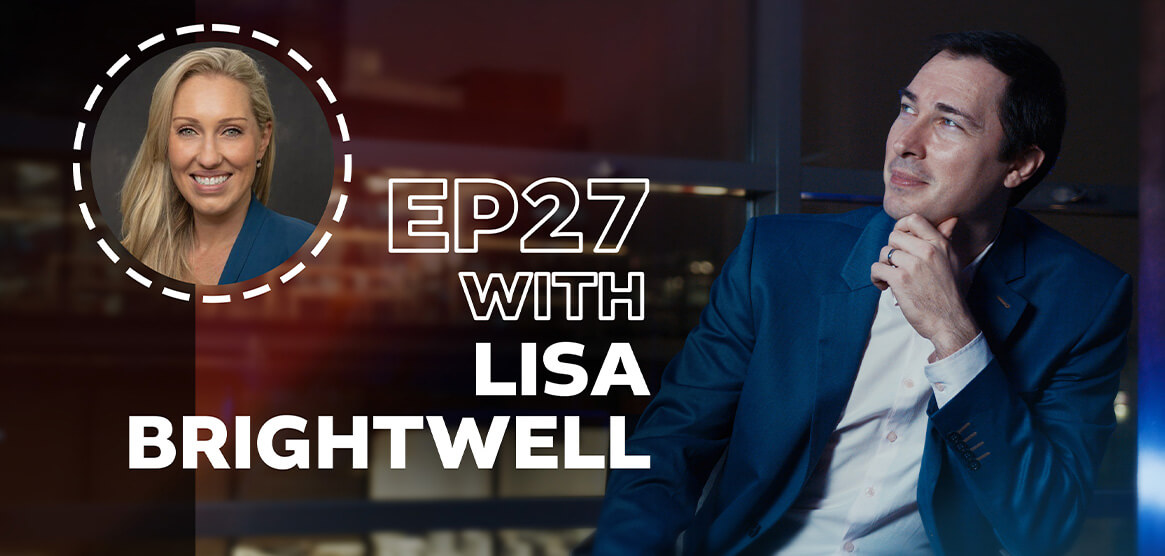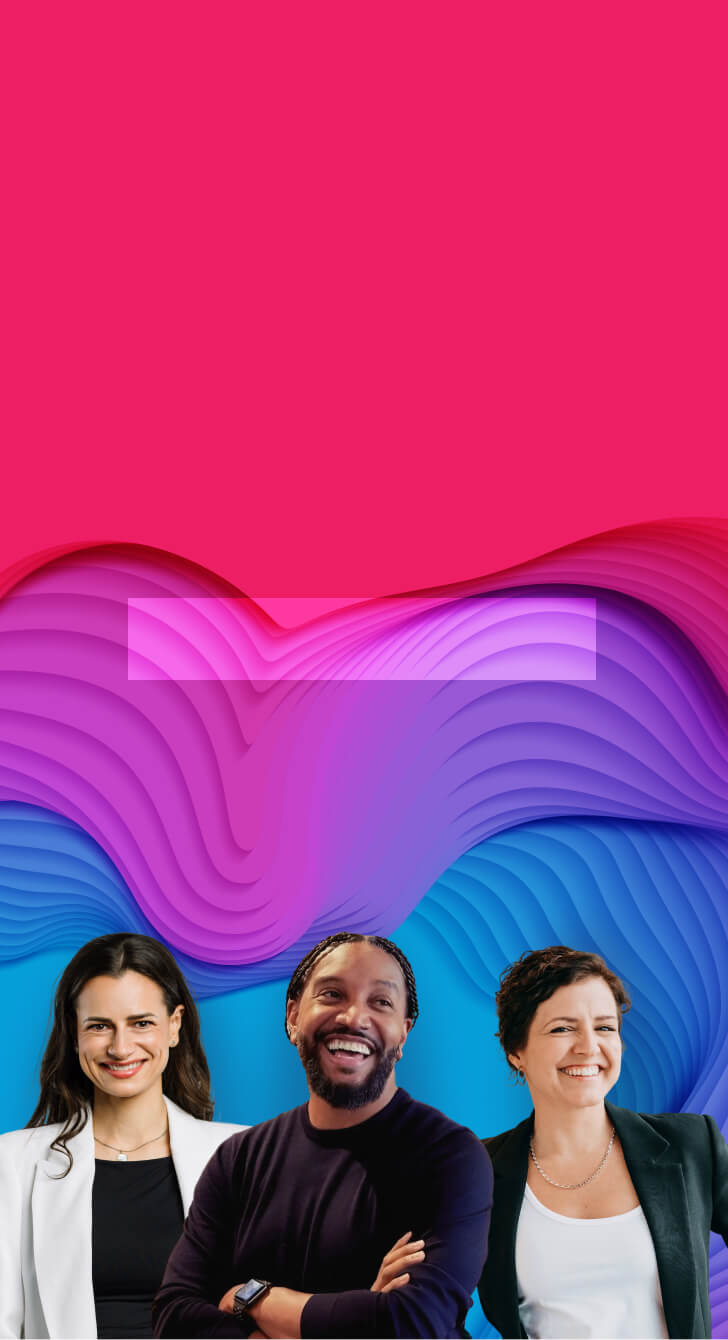On this week’s episode of Antavo’s Loyalty Stories video podcast, we’re joined by Lisa Brightwell, Managing Director at Bright Insights Consulting.
The interview for this podcast has been a valuable source for Antavo’s Global Customer Loyalty Report 2024. Make sure to download it for over 30 statistics on loyalty program trends.
In this episode, we discuss Lisa’s favorite loyalty program Hilton Honors, and how they effectively use customer data in their email marketing. We explore the possibilities that card linking provides for retailers through capturing data outside of the brand’s core ecosystem. Additionally, we delve into Hugo Boss’s revolutionary NFT strategy.
Highlights from our conversation with Lisa:
- Element of choice truly is the future of loyalty (and targeting Gen-Z).
- Quick segmentation by filtering customer data is a must-have vendor capability.
- Which one’s better: a strategy-led or IT-led approach to loyalty?
- Could partial redemption be the answer to cost-effective value offering?
Learn more:
- LinkedIn profile of Lisa Brightwell
- Bright Insights Consulting website
- Explore NFTs in Loyalty Programs
- Book a demo with Antavo’s loyalty experts
Gabor
Hi, and welcome to Loyalty Stories, that is Antavo’s podcast on customer loyalty and loyalty programs. I am Gabor Vigh, one of the Partnership Managers at Antavo, and Antavo is a technology vendor that empowers loyalty programs all over the world. We help various great businesses such as KFC, Benefit Cosmetics, and very well-known global automotive and fashion brands, airports, and so on.
In this Loyalty Stories podcast, we dive into the trends around loyalty programs and customer loyalty. We talk with industry experts all around the world to pick their brains to learn what’s new and what’s next in loyalty programs.
Today’s guest is Lisa Brightwell, the Managing Director and the Loyalty Strategy Planner at Bright Insights Consulting, a boutique consultancy specializing in helping companies optimize revenue and use data to resonate and drive transactions in more personalized and contextual manners.
As an interesting fact, she lives in Dubai for many, many years, but she was born in Basildon in the UK, the town where I’ve been living for the past seven years now, so it was completely unexpected finding this link. So, hi Lisa, how are you doing?
Lisa
Hi Gabor, that’s our connection, Basildon.
Gabor
Indeed, that’s the case. Thank you so much, Lisa, for accepting our invitation for today’s Loyalty Insights Stories. And before we just dive into loyalty, would you mind just briefly introducing yourself to the audience?
Lisa
Of course, thank you for introducing me. My name is Lisa Brightwell. I’m the Managing Director of Bright Insights Consulting. We specialize in loyalty strategy. It is a personal passion, I’d say, as well as a professional passion. We’ve been operating for the past nine years. We’re based out of the UAE and helping businesses within the regions and globally create and optimize their loyalty strategies within their business.
Gabor
Great, thank you, Lisa. Because you’ve been a loyalty passionate for a long time now, and you mentioned to me before that you are a member of several loyalty programs. What would you say, what would you name, put down as your favorite loyalty program?
Lisa
I find this question hard because I don’t want to offend any of my clients either, or previous clients. But, you know, I think it changes for me, depends on what people are doing at any given moment. There’s a few that I really like. I like Sephora, I like Vitality. But one of the ones I’ve been very impressed with of late is my Hilton Honours membership.
Specifically because of the way that they are managing their email marketing. I’ve noticed that if I haven’t stayed for a while, or it’s been a while since I’ve booked, I’ll get an email that’s trying to hook me into my next day and reward me for it. And I really enjoy the way that they use their data effectively to try and get me to pre-book or get my next day build up my points balance. And so my recent favorite has been Hilton Honors, but it does change, Gabor, because there are so many good programs out there.
I find it hard to answer that question. But of late, I think I’ve been telling all my colleagues, did you get that Hilton email? And they’re like, no, and I’m like, I just got offered 6000 extra points if I booked by this week. So they’re really thinking about my previous stay history, they’re really thinking about me as a, as a customer and how to hook me into my next best action I think that a lot of programs say that they do that and they don’t actually do it. So it’s really nice to see a program actually utilizing their data and trying to get me to make that next transaction or that next commercial action.
Gabor
Great example, thank you Lisa. Based on your career, what would you put down as your piece of work that you’re most proud of? Or even without offending any of your clients or past clients, you can say about coming up with a concept that was very unique on the market.
Lisa
Okay, I mean for us the last few years we focused a lot on data gathering because obviously we know that a big part of loyalty is the capture and utilization of data. One of the things that we’ve focused a lot on, and I think you may know this, is card linking. So card linking into programs, plugging in a technology that allows programs to capture transaction data from members who have linked their card in.
And what that’s done for programs locally, a lot of the major airlines have adopted card linking strategies, is it’s enabled them to capture data outside of their ecosystems. So outside of flying, outside of interacting with their core products, their co-brands or their reward shops, we are starting to capture customer data for transacting in everyday lifestyle.
Now that enables brands to not only get more insight, but it enables you to then start to look at profiling and segmenting your audience further to create better marketing campaigns. And I think that that’s been not only great for the data side of things, but also loyalty talk has talked a lot about, you know, building in lifestyle into propositions. Loyalty programs are no longer or should no longer really be about just points and tears. They need to be so much more than that.
And by enabling seamlessly and frictionlessly, the ability to redeem currencies through card linking technology on mass scale has really helped programmes to adopt other lifestyle strategies. So I think for me, our work in this space, where I think we’d say that we are regional specialists, along with some of our partner, a lot of solutions we work with in the card linking space specifically.
We’ve spent a lot of time learning the nuances of that, how to perfect it, how to best proposition that as well in the market. And so I’m very proud of us pioneering that space because card linkling can connect with any loyalty platform and have it’s an ancillary input of data and also an ability to expand the ecosystem of programs. So we’ve spent a lot of time working on that and we’re very proud of that.
Gabor
Great. Do you consider this card linking capability in loyalty programs as a major change in the past couple of years? Or are there any changes that you would like to highlight in the loyalty space?
Lisa
Yeah, card linking has definitely been a big change. You see more and more companies adopting that. I think if you ask about what the big changes in loyalty over the past couple of years, I think connected to card linking is lifestyle. People are looking outside of their own core ecosystems and thinking, how can we embed loyalty into the everyday life of our member? And in doing that, how can we provide more value and how can we capture more data on the consumer?
So I’d say the lifestyle, although I actually hate the word lifestyle. I think I’ve heard it so many times now that I’m kind of bored of the word of it. But the concept of programs really thinking outside of their borders and bringing in more, more contextual value, I think is great.
And I think the, the other one that I don’t think anybody’s going to contest with me on is personalization. It’s been the hot topic. Everyone’s talking about how we need to personalize our programs, personalize our communications. And I don’t mean just sending a happy birthday email. I mean, really taking on data using perhaps AI machine learning to really drive segmentation and omni-channel communications.
And I think that’s been the real movement, I guess, in loyalty the last couple of years is how do we achieve that, that personalization and how do we incorporate into the lifestyles of our member, lifestyle of our member.
Gabor
And was there anything that really surprised you recently in terms of like, for example, a new program coming out or a new strategy that got implemented into loyalty programs or like a new concept for loyalty?
Lisa
So I think things that are up and coming in loyalty in terms of what people are doing now, I think is really engaging in the Web3 space. And for me, that’s really interesting in blockchain loyalty, Web3 strategies, looking at whether that’s NFTs, whether that’s using blockchain. I think people are starting to dabble in that in different forms and different varieties.
And I think that’s been really interesting to see the involvement of programs engaging in that space. Certainly, you know, in the luxury sector, we’ve seen things like NFTs been sold. I think Hugo Boss has a loyalty program specifically revolving around NFTs. You buy a particular jacket, you get given the same jacket as an NFT, and then you be part of this special club.
It’s kind of like a loyalty, like a membership, like a loyalty membership, because you’ve got this NFT, and you’ve bought the same, the actual physical product itself. So I think there’s been some really interesting innovations in terms of loyalty, loyalty evolvement, shall I say, in the last couple of years.
Gabor
And if we look into the future in loyalty programs, what do you think will be the two main fresh trends in loyalty? What will be kind of like dominating or taking over the strategy for loyalty concepts and strategy?
Lisa
I think I’d have to actually throw personalization back in there, because I don’t think we have reached a level of hyper-personalization to the degree we should. And I think there are a lot of really good tools out there from machine learning, AI, that enable us to do it better. So I think upcoming people are going to really be focusing more on the structure of their data.
What tools they use to create those micro and segments that they can then get a much deeper level of personalization. So I think I’ll keep personalization as an ongoing trend. But also, and I’ve briefly touched on Web3, definitely Web3 is going to be coming more into the forefront. Blockchain in particular, the security aspect of it is great.
I think also in a Web3 environment, you also have this sense of community. There’s true loyalties gained when a person experiences a sense of belonging, right? And I think in the Web3 space, community and belonging is a really, really big feature. So Web3 is definitely going to evolve in the loyalty space.
But I think as well, my personal favorite and something that I’ve been trying to embed into some of our strategies is this element of choice. I think a lot of programs dictate to members, these are your benefits. If you spend this amount of money or you do this amount of interaction, this is what you’re going to get. And I think, you know, we can’t continue to be dictating like that.
I’d love to see programs really involving the consumer in a more of a choice. You know, in the next few years, Gen Z is going to become such a huge part of most loyalty program audiences. And I think the characteristics of the Gen Z audience means that they’re going to be looking for more interactivity with the brands that they’re loyal to, they’re looking for more experiences.
And I think what greater way to create a more deep and meaningful, maybe even emotional relationship with people is to allow them to choose the way that they interact, let them choose how you communicate to them.
Marketeers are notorious at pumping emails and SMSes at people, but what if that’s not the methodology that I want to? I know you can turn off and you can choose these days, but expanding the choice of the way that I communicate with a customer, asking a customer what kind of benefits would they like? I think my background is very much hospitality and I think in the hospitality industry, you know, I’ve seen in this region, we’ll say things like, here are your benefits, you get an upgrade when you check in, you get free shirt pressing, you get X, Y, Z.
But what if I don’t stay? What if I don’t go to the hotel for a stay? What if I go there for F&B? What if I go there for spa? What if I go there for a beach day? What benefits are available to me that make sense to who I am and can be contextual to who I am as a customer? And so I’d love to see loyalty strategies offering elements of choice.
Be that whether in the way that I communicate, be that in the way that I provide you data, or be that in the value proposition delivery, giving me the opportunity to choose what makes sense to me as a customer. So I’d love to see more choice. Definitely personalization, and it’s undoubtedly that Web3 is gonna move faster in the next couple of years as well.
Gabor
I can relate to that completely, Liza. I would like to see more choice options as well in my loyalty programs. And in terms of these trends and the ongoing vein in the path of hyper-personalization, what do you think, how a loyalty program technology company should support this? What are the main features that a technology has to have?
Lisa
I think tech vendors really need to future proof their platforms with key features and tools, right? And I think that they need to consider that speed of that innovation and be flexible. You know, I see very often clients that have old legacy platforms that sadly have been slow to react to the demands and needs of the market or what clients want the platforms to do.
It shouldn’t take so long for campaigns to be executed. It shouldn’t take so long for changes to happen in platforms, but unfortunately it does when platforms aren’t updating constantly themselves and waiting for the client to issue a change request for a change.
So I think tech platforms really need to have their own innovation work streams where they work with clients to say and they look at the market, they look at future trends, so they are themselves future-proofing their platforms and moving at a similar speed with innovation because I think that will help not only their existing clients, but help with the sales process.
Because if you can prove that not everything is a change request all the time, we as a vendor, we as a platform are constantly evolving and adding new features that make sense for the market, I think that’s a ticket to win it really. I see it a lot. I see lots of platforms and the ones that are ready to future proof are going to be the ones that are going to be succeeding in the long run.
Gabor
Great, thank you Lisa. In terms of technical capabilities, if you need to select one really cool feature that has to be there in a loyalty technology that a platform can provide, what would it be?
Lisa
Oh, that’s a very interesting one. OK. Well, there’s lots of elements for me that need to be there. But one of the things I think that I like, I’ve seen and I like is the ability to very quickly create segments by filtering in the platform data, attributes, data, activities, to create segments or micro segments and then instantly been able to act upon that and drive out an omnichannel campaign or survey or anything that you want, any activity or actions that you want to do.
Having the ability to do that yourself as a marketeer, as a loyalty program owner in a platform to react quickly to changes or to new segments or to new trends would be great. So a platform that incorporates some kind of machine learning that enables auto segmentation or enables you to filter and choose activities to create segments and then act upon that quickly and seamlessly without having to pull reports from one system, uploading from another and doing multiple different actions.
The ability for me to go in and then I can create some omni-channel campaigns directly in platforms I think would be I know it exists, but it is definitely a value add for me as someone that might operate a program to be able to react quickly.
Gabor
Yeah, yes, and based on my previous interviews for this podcast series, I can tell you you’re not alone with this kind of desire or capabilities who want to see this, yes.
Lisa
Oh, good. Okay, well that’s good to hear.
Gabor
Yeah, so I think definitely we will see more AI coming into the loyalty platforms, probably machine learning as well, but I think first AI should be set and then we can come up with those even like software boards that can help us analyze this data and put up this learning element in loyalty programs.
Lisa
Yeah.
Gabor
And related to the technology, there’s always a dilemma and I hear it more and more often these days. Build, in-house or buy loyalty technology?
Lisa
Oh goodness. You know, I see, also see this a lot. People, they, they might have an older platform. Then they decide, you know what, we’ll build it in house because it, it’ll be easier and we can, we can build something. But you know what, I’m a big advocate for letting, you know, working with experts that have spent time, money and experience building out platforms themselves, versus then expanding the energy to try to build something internally yourself. It takes a lot of time, a lot of effort, trial and error.
I would rather spend my time and effort elsewhere internally and really focus on working with partners that this is their core business, this is what they do for a living, therefore it’s in my best interest to partner with someone that is investing the right time and effort into development of their own product on a continual basis.
Because once you’ve built something in-house, if you then have to try to continually like we talked about before, make sure it’s future-proofed and innovate. That’s a lot of time and effort and investment. And I don’t think I’d want to go down that route internally within a business. I’d much rather partner with a platform like Antavo or anyone else to spend that time and effort to do that for me.
Gabor
Thank you Lisa. And because you’ve been working on many different projects right now, but also you have done quite a lot of work in the past, what do you see? Who are behind the loyalty projects? Who are your key stakeholders when you talk about loyalty implementation and having a loyalty program in place?
Lisa
You know, it’s mixed. And in this region, I think I do see a mix. I do see a lot of IT departments managing loyalty projects. And that’s because I think internally in the business, people think loyalty is a platform. Loyalty is not, loyalty should be the strategy and the platform is the enabler. But when I see this quite often where companies want a loyalty program. They go to IT and they say, okay, I want a loyalty program, procure me a platform. But they don’t know necessarily what their strategy is.
And then on the flip side, you have some companies that it sits with marketing. And if they’re lucky enough to have a loyalty department, then it’s great. Otherwise, it’s marketing that are looking for the strategy first, and then they look at what kind of platforms will match the strategies that they’re looking to achieve.
So personally, I think it’s better to come from a strategy-led decision versus an IT-led decision. But equally, IT is very, very key as a stakeholder in this decision because not just from a hosting and security and compliance standpoint, they are continually a big stakeholder in the project. So I’ve seen it come the decision making process for platforms been from both sides.
I think the stakeholders are equally important, but I like to see strategy coming first and then the platform coming either overlapping slightly or alongside because sometimes you do find that platforms present themselves and they’ve got amazing products that you hadn’t thought of and so it’s nice to kind of see, oh, that would be great in our strategy because that really complements this objective.
But knowing what you want to achieve and how you want to achieve it, and then finding the right platform that can do it, and then finding a platform that also has capabilities that could perhaps enhance that strategic direction. But yeah, it is different per company, really.
Gabor
Great, and I think this is also a good advice for those brands who are looking into loyalty and trying to discover what’s there and what are the necessary steps that they need to do first and then after the first steps.
Lisa
Yeah, because I think it could get I think, you know, if it’s IT-led, and, and IT come to someone like yourselves, and maybe I asked you a question, Gabor, but, but if you are as a tech platform not clear of the strategy objectives of the client, it becomes a bit more difficult from an implementation standpoint to implement exactly what they’re looking for, because it isn’t clear.
And so I can imagine from your side as well, that you need a very clear kind of, this is the CVP, this is the business requirements, so that you can implement the platform at your end. So I’m interested actually in your view on that because do you concur with that or is that something that you see?
Gabor
Yes, and what I can say is that Antavo is definitely trying to do what you are advising here, Lisa. So we are really trying to speak with those prospects who have a clear vision about their concept, what they want to achieve, what kind of elements they want to include in the program, because then it’s just easier and the expectations are set and there’s not going to be surprises, going to be delays in the project.
And also in the implementation side, because it I think it happened in the past in some few occasions when we said yes to projects too quickly and basically the project either never started or started with major delays because the statement of work wasn’t listing everything or crucial elements in the loyalty programs and clients might have a. changing their minds as we were doing the implementation. And yes, it can make things much easier if the concept is there first and then second speak with a loyalty technology company.
Lisa
I think you did ask me the question about what stakeholders involved and we talked about IT and marketing, but the reality is loyalty is should in his business transformation across multiple areas. So actually the stakeholders need to be across every verticals because not only you want to create that alignment, but you also want to make sure that loyalty is embedded across the business and is not just kind of implemented from one area as well.
So we do look at loyalty and look at loyalty transformation from business process and tech and data so that we ensure that all stakeholders within the business are aligned with one, the strategy direction and then they can support the implementation all the way through to management. So whilst the entry point for the discussions have typically been either IT or marketing, stakeholders need to be across the business to be able to make this work.
Gabor
Yes, indeed. Thank you so much, Lisa. How do you think companies will adjust their investments in these areas in the current economic downturn? So in these areas meaning customer acquisition or customer retention.
Lisa
I think at the moment with the economic situation, programs are and should be spending their time on looking at the customers that they have and how they can create more meaningful relationships with them. But not just that, with the economic situation, how can they provide more value to their customers, particularly if at the moment money is tight or things are a bit more difficult than they have been.
So I know that using data to provide high value but potentially low cost to the business support to customers, things like partial redemptions I think are really great right now because not only does that enable the business to get the transaction and the sale, but it enables the cost of the transaction to lower for the customer.
And so looking at how you can not just use your data to personalize and be more contextual with value and meaningful value for the customer to make that next best action or the next transaction, but also promoting things and services that you have as a core to your program that can help them and have more value.
So, I mean, I actually was having this conversation with one of our partners at Etihad this morning and he had mentioned he was talking about how partial redemptions is a great option for people right now to not have to pay the full price and get, if you like, a discount off of the price of what they’re transacting because of the ability to have partial redemptions.
Gabor
This is really a value taught at the end of our conversation, Lisa. Yeah, it’s definitely, there’s food for thought. And yes, thank you so much, Lisa, for being here with us today and sharing your point on loyalty. I really enjoyed our conversation with you today, especially when you were talking about that hyper-personalization is not finished yet, and it’s still like an ongoing trend and how, for example, we should be like using AI for like segmentation. So that’s a really good one.
But also I would like to highlight from our conversation that the element of choice quote that you made, that instead of like dictating let the customers choose how the brand communicates with them, what sort of benefits or rewards are in interest for the customers, so let them choose. And also how the Gen Z is looking for more experiences in loyalty programs. So yeah, I really, really enjoyed the conversation. So thank you so much, Lisa.
Lisa
Thank you so much.
Gabor
And for the viewers, wherever you listen to us, be it on a podcast platform, YouTube, LinkedIn, please like this podcast, please like our channel, please subscribe to our channel as well, so by this way you will get a notification when the next episodes are out, and also tell us what you think of loyalty in the comment section below.
Feel free to visit antavo.com to discover your next loyalty software. Antavo is a next-generation loyalty program technology company used by global companies like KFC, Benefit Cosmetics, automotive and fashion brands, airports all over the world.
But also don’t forget to visit Bright Insight’s website at.brightinsightsconsulting.com and Lisa’s LinkedIn page to find out more exciting details of her work.
Thank you and see you on the next one. Bye for now.
